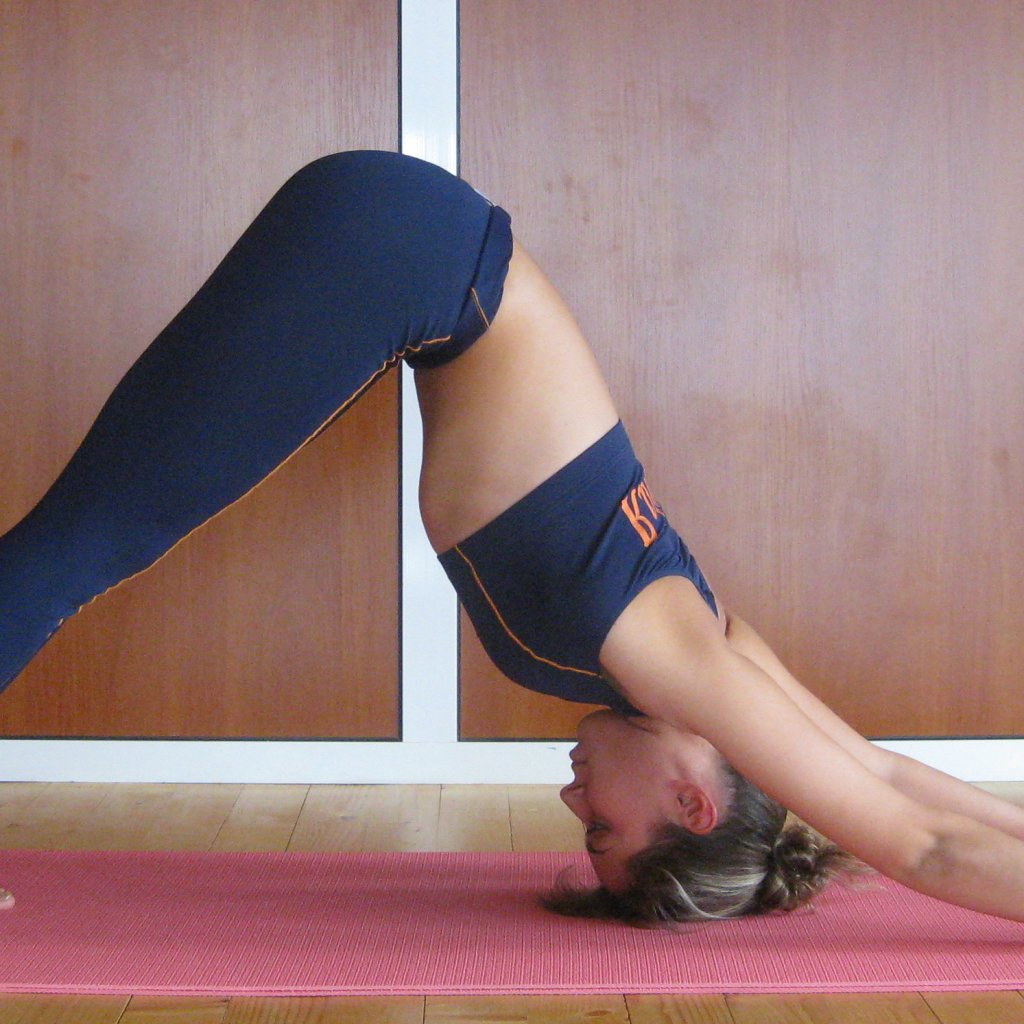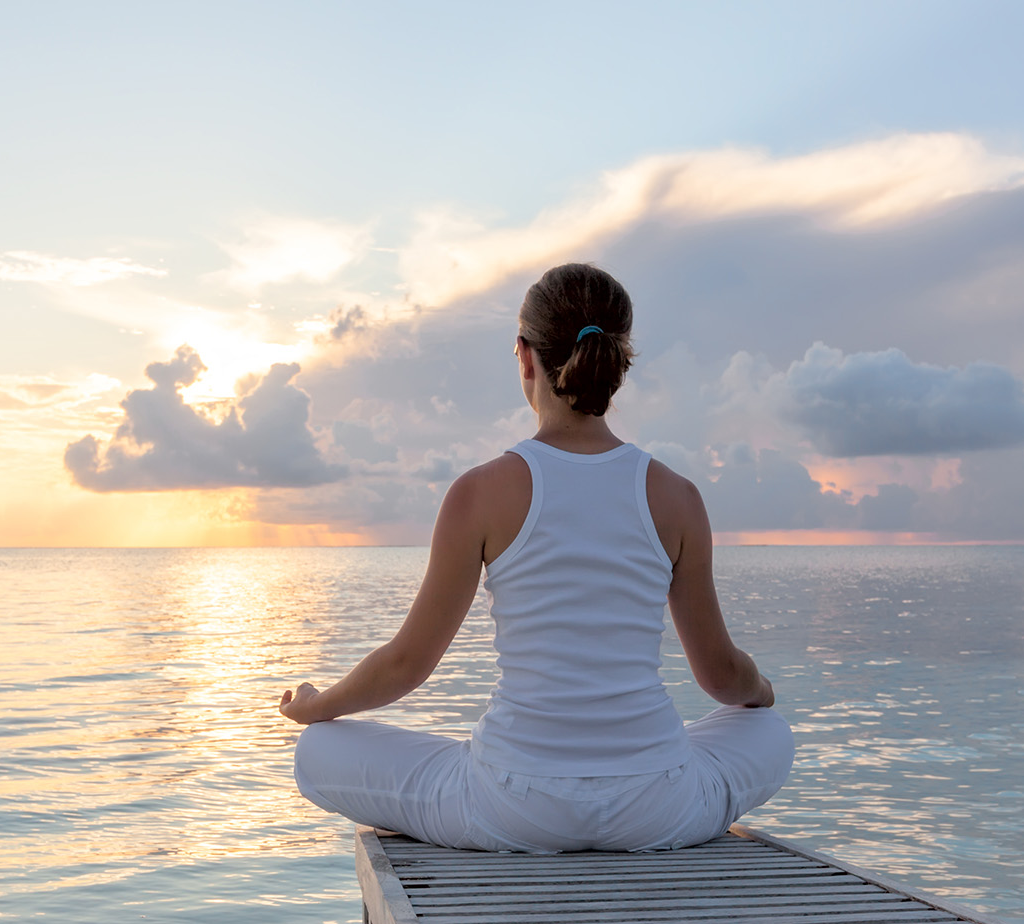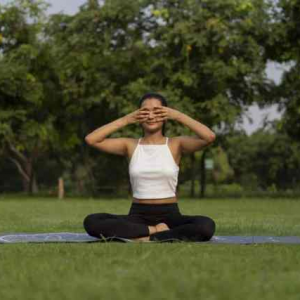If you suffer from migraine headaches, you might be wondering what you can do to find relief from the pain and discomfort associated with these debilitating headaches. While medications can help, many people are turning to natural approaches to migraine management, such as yoga for migraine.
Yoga is a low-impact form of exercise that is gentle on the body and can provide many benefits for those suffering from migraine headaches.
In this article, we will explore the benefits of practicing yoga for migraine and provide some tips and tricks on how to get the most out of your practice. But before that let’s first understand migraine better.
What is Migraine?
Migraine is a debilitating neurological disorder that is characterized by severe and recurrent headaches. Migraines can last anywhere from hours to days, and they can be accompanied by a number of unpleasant symptoms such as nausea, vomiting, and sensitivity to light and sound.
Migraine is a very complex condition, and it is still not well understood by medical professionals.
It is believed to be caused by a combination of genetic and environmental factors, as well as lifestyle choices. Fortunately, there are a number of treatments available to help manage the symptoms of migraine.
What causes migraine?
The origin of migraine headaches is intricate and not completely comprehended. When you experience a headache, it is due to particular nerves in your blood vessels that signal your brain to feel pain. This starts the release of inflammatory substances into the nerves and blood vessels in the head. The reason why this occurs is not known.

Migraine attacks can be triggered by a variety of factors. Common triggers include:
- Emotional Stress
- Missing a meal
- Sensitivity to specific chemicals and preservatives in foods
- Caffeine
- Daily use of pain-relieving medications
- Hormonal changes in women
- Light
There could be other triggers as well. Some of them are
- Unfavorable climate alterations like thunderstorm fronts, barometric pressure shifts, blustery winds, or modifications in altitude.
- Being totally exhausted. Exhaustion from hard work.
- Skipping meals or not drinking the necessary amount of water.
- Deviations from your habitual sleep cycle.
- Noises that are too loud.
- Being exposed to smoke, fragrances, or other smells.
- Some medications can bring about enlargement of the blood vessels.
What are the four stages or phases of a migraine?
The four stages of a migraine, in the order they occur, are the prodrome, aura, headache, and postdrome. Approximately 30% of individuals have signs before the start of their headache.
The prodrome, or pre-monitory stage, can be experienced for a few hours or a few days; yet, it may not manifest every time.
The aura phase may last between 5-60 minutes and not everyone experiences this.
The headache phase can range from 4 hours to 3 days with a pain often described as drilling, throbbing, or like an icepick in the head. This can start on one side and spread to the other.
The postdrome stage goes on for a day or two. It’s often called a migraine “hangover” and 80% of those who have migraines experience it.
It can take about eight to 72 hours to go through the four stages.
Starting a Yoga for Migraine Practice
Yoga is a great way to find relief from migraine headaches. It is a form of exercise that is low-impact, gentle on the body, and can help reduce stress and tension, which can help reduce the severity of migraine symptoms.

But before you start a yoga practice for migraine, it is important to talk to your doctor to make sure it is safe for you. Some people with migraine may find that certain poses can make their symptoms worse, so it is important to discuss this with your doctor before starting.
Once you have the okay from your doctor, you can begin to explore different types of yoga for migraine. There are a number of different types of yoga, each of which offers different benefits for migraine sufferers. Hatha yoga is a great place to start, as it focuses on gentle stretching and breathing exercises that can help relax the body and reduce stress.
Other types of yoga, such as Iyengar, Vinyasa, and restorative yoga, can also be very beneficial for migraine sufferers.
We will now talk in detail about yoga asana, pranayama, meditation and yoga nidra that will help people troubled by migraine. Let’s get started 😎
1. Yoga poses for Migraine
1. Child’s pose
Doing the child’s pose can help you to diminish strain from your upper body and stretch your shoulders, back, and spine, which can boost the blood flow to your head. In addition, by putting your forehead on the floor, you are stimulating certain pressure points in your forehead that can reduce migraine and headache pain.
How to do:
- Start by bringing your big toes together and then stretching your legs outwards to the edges of your mat.
- Subsequently, lower your torso to the ground and move your hands toward the front of your mat.
- Finally, place your forehead on the floor and move your head from side to side in order to reduce any built-up tension.
2. Savasana
When you are in savasana, your entire body is fully relaxed, resting on the floor beneath you. This sensation of ease can aid in reducing your migraine, in addition to the slow breathing that this pose encourages, bringing more oxygen to your brain.
How to do:
- Lie down in a supine position with your arms at your side, and your palms facing upwards.
- Unwind all the muscles in your body (including the ones on your face) and shut your eyes.
- Allow your breathing to become slower and deeper. Spend a minimum of two to five minutes in this position.
3. Downward Dog
This pose is an inversion as your heart is above your head. This can reverse the flow of your blood and cause an influx of oxygenated blood to your brain.
How to do:
- Begin by getting into the tabletop position. Curl your toes underneath and then lift your hips up and backward while simultaneously bringing your heels towards your mat.
- Make sure to draw your biceps close to your ears while stretching out your legs.
- Allow your neck and head to feel relaxed while your torso leans back towards your thighs.

4. Marjariasana / Bitilasana (Cat-Cow Pose)
Cat-Cow is an exercise that helps enhance your blood flow, lengthens your neck and spine, and can be incredibly soothing for the mind and body.
How to do:
- To do the exercise, assume a Tabletop position on your hands and knees. Make sure your knees are right beneath your hips, and your elbows, wrists, and shoulders are in a straight line and upright to the floor.
- Hold your head in a neutral position with your eyes looking downward. When inhaling, raise your tailbone and chest towards the sky, and let your abdomen sink towards the floor. Move your head up and look in front of you.
- On exhaling, curve your spine up to the ceiling and make sure not to alter the position of your knees and shoulders. Gently lower your head towards the ground, yet don’t press your chin to your chest.
- Repeat the process as much as needed, following your natural breathing pattern.
5. Paschimottanasana (Two-legged Forward bend)
The Two-Legged Forward Bend calms the brain and relieves stress. This yoga posture also relieves headaches.
How to do:
- Bring your arms straight out to the sides and up over your head, reaching toward the ceiling. Inhale and draw your spine up long.
- As you exhale, begin to come forward, hinging at your hips. On each inhale, lengthen your spine. You may come a bit out of your forward bend to do this.
- On each exhale, deepen into your forward bend. Keep the neck as the natural extension of your spine, neither cranking it to look up nor letting it go completely.
- When you have come to your full extension with the spine long, decide whether you want to stay here or let your spine round forward.
- Take hold of your ankles or shins, whichever you can reach.
6. Palming
When we become overwhelmed with a stream of emotions and thoughts, a migraine attack can be the result. The technique known as palming can help reduce stress levels.
How to do:
- To practice this, sit in a soothing posture and take a deep breath.
- On the exhale, cover your eyes with your hands until it’s completely dark, and then take your hands away when inhaling again.
- Repeat this cycle as long as it’s comfortable.

Tips To Get The Most Out Of Your Yoga Asana Practice
- When practicing yoga for migraine relief, it is important to remember to take it slow and be gentle on your body.
- Don’t push yourself too hard and listen to your body.
- If a particular pose doesn’t feel right, don’t force it.
- Be mindful of your breathing and focus on releasing any tension or stress in your body.
- Try to practice in a quiet space with minimal distractions and keep a journal to track your progress.

2. Meditation for Migraine
Meditation for migraine has proven to be a powerful tool for managing migraine symptoms. By using mindfulness, relaxation, and visualization techniques, migraine sufferers can reduce pain levels and find relief.

And with yoga, they can also reduce stress and tension, which can be a major trigger for migraine attacks. Research has shown that when combined with other migraine treatments, meditation can reduce the frequency, severity, and duration of migraine attacks.
To get started, you can also try gentle stretches and yoga poses to help reduce tension in the head and neck, which can help reduce the intensity of migraine attacks.
Finally, consider adding some mindful breathing to your practice. Taking a few deep, slow breaths can help reduce stress, relax the body, and ease tension in the head and neck. So if you suffer from migraine, give meditation and yoga a try. You just might find relief!
3. Pranayama for Migraine
Pranayama is an ancient yogic practice that has been found to be beneficial for a number of health conditions, including migraines. It involves regulating your breathing, which can help to reduce stress, improve circulation, and reduce inflammation – all of which can help to alleviate the symptoms of a migraine.

It can also help to improve your overall physical and mental wellbeing.
To practice pranayama, sit comfortably, close your eyes, and take a few deep breaths in and out. Then, focus on your breathing and try to slow it down. You can practice various pranayama techniques, like alternate nostril breathing, which involves inhaling and exhaling through alternate nostrils.
Other techniques include kapalbhati, ujjayi, and bhastrika. With regular practice, you may find that your migraines become less frequent and easier to manage. So why not give it a try?
Here are 3 yoga pranayamas that will do the job for you:
Anulom Vilom Pranayama
- Get yourself into a comfortable position on the floor, such as easy pose or lotus pose. Make sure your spine is straight and your shoulders are rolled back to open up the chest.
- Take three deep breaths. Place your left hand over your kneecap and form Vishnu mudra with your right hand (where the index and middle finger are bent and the remaining three fingers are free).
- Begin breathing. Inhale through the left nostril with the right nostril closed off with your thumb. After the complete inhalation, close the left nostril with your ring and little finger and exhale deeply from the right nostril.
- Repeat the same steps with the right nostril this time.
Bhramari Pranayama
- Make yourself comfortable by sitting on the floor and loosen up your body before starting with the breathing exercise. Cover your ear and eyes with your thumb and first finger.
- Draw in air through your nostrils and exhale with a ‘Hmmmmm’ sound while vibrating your throat.
- Notice the sensation of sound throughout your body. Gradually, lower your arms and revert to your regular breathing pattern.
- Do this breathing activity 10-12 times and you will observe a decrease in headache discomfort.
Bhastrika Pranayama
- Take a seat in a cross-legged yoga position such as Padmasana or Sukhasana. Put your hands on your knees and then relax.
- Begin with a deep inhalation, followed by a long exhalation and then a quick inhale. With each inhalation and exhalation, let your abdominal wall expand and contract respectively.
- Do this breathing pattern for about a minute and then slowly return to your natural breathing pattern.
- When you are done, recline onto your mat in Savasana and let your abdominal wall move naturally for a few minutes.
4. Yoga Nidra for Migraine
Yoga Nidra is a type of guided meditation that is known as “yogic sleep” or “effortless relaxation”. It is usually done while lying down with a coach leading the session. This practice brings our attention inward, and we learn to move between the states of being awake and asleep, which allows our body to reach its natural balance (homeostasis).
Our breathing becomes smooth and quiet, the unconscious and conscious aspects of the mind appear, and we slip into a natural state of profound, joyful understanding.

Yoga nidra is a relatively new but extremely effective technique for treating migraine headaches. This practice involves deep relaxation and meditation, which helps to reduce stress, tension, and inflammation. It also increases serotonin levels, which can reduce the intensity of migraine headaches.
Studies have shown that regular yoga nidra sessions can reduce the frequency and severity of migraine attacks. What’s more, yoga nidra is easy to learn and can be done at home or in a group setting.
It’s also gentle enough for people of all ages and abilities. So if you suffer from migraines, give yoga nidra a try! You just might find that it helps to reduce the intensity of your migraines and even prevent them from occurring in the first place.
Conclusion
There is no treatment that can completely eradicate migraine, but people can try to prevent it by avoiding factors that can trigger it and utilizing various treatments to alleviate the symptoms.
These treatments involve over-the-counter medications, prescribed medications, acupuncture, botulinum toxin type A, specific therapies, and transcranial magnetic stimulation (TMS).
Studies have demonstrated that yoga can help reduce the intensity and frequency of migraine headaches when it is used alongside other medical treatments. It is recommended to use yoga poses that induce relaxation and those that gently stretch the neck, head, and shoulder area.







